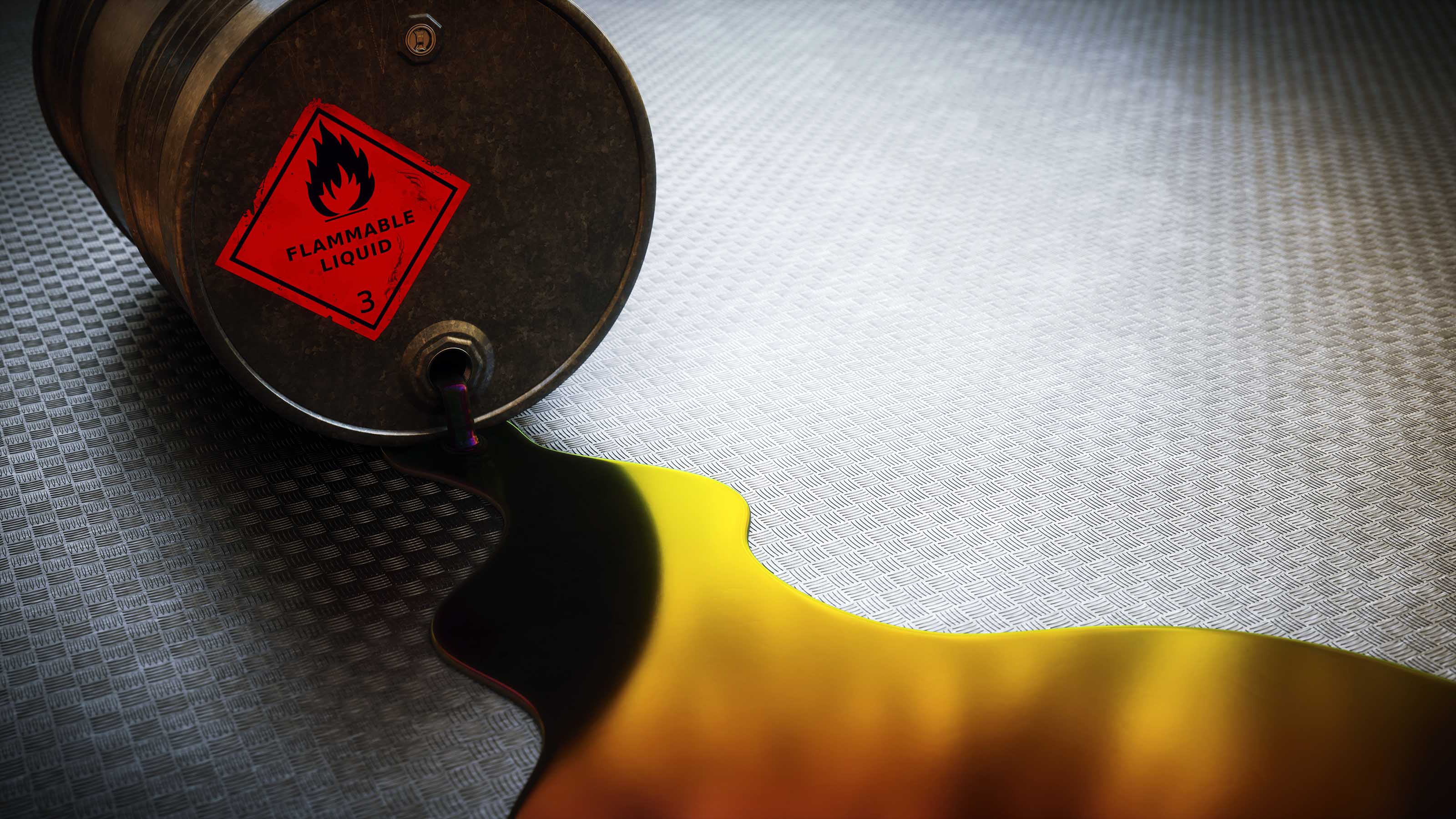The Next Threat to Oil Prices: Russia?
Russia's signaled message to OPEC – effectively 'kill shale or we will' – could put the brakes on oil's recovery


This spring, commodity traders and investors in energy stocks around the world looked on with astonishment at oil prices.
In April, West Texas Intermediate crude oil futures went negative for the first time in history, hitting -$37.63 on April 20, shocking global markets. One day trader ended up incurring a $9 million paper loss, as quote screens at brokerage firms like Interactive Brokers, were not programmed to go below $0. (IBKR's issues resulted in a $113 million loss for the firm, Interactive Brokers CEO Thomas Peterffy said.)
However, oil prices, like the broader stock market, did not stay depressed long; futures rebounded sharply, with West Texas Intermediate currently selling around $43 per barrel, and Brent (international) around $46 per barrel. Global demand is also normalizing at about 10% lower year-over-year, though the pace of recovery has been slower than the industry previously anticipated.
From just $107.88 $24.99 for Kiplinger Personal Finance
Become a smarter, better informed investor. Subscribe from just $107.88 $24.99, plus get up to 4 Special Issues

Sign up for Kiplinger’s Free Newsletters
Profit and prosper with the best of expert advice on investing, taxes, retirement, personal finance and more - straight to your e-mail.
Profit and prosper with the best of expert advice - straight to your e-mail.
So what does this mean for investors in energy stocks?
Oil Prices Are at a Pivot Point for Global Producers
The good news is that between OPEC production cuts and reduced U.S. output, the crude market is broadly balanced.
The bad news: With Brent above $45 per barrel, OPEC might change course from a price-control strategy (production cuts) to a market-share strategy (pump more oil to keep U.S. producers from hedging forward).
A second risk to oil prices is if American producers find a forward curve at $45 attractive enough to resume drilling. The forward curve allows a producer to sell his oil out into the future at an agreed-upon price derived by the market today. But those barrels need to be stored until that future date, so the producer has to add those potential costs into the equation to determine if that future price is feasible.
25 Stocks That Billionaires Sold in Q2 2020
An oil price high enough to allow American shale producers to continue to pump, store, and sell into the future is exactly what the Russians want to avoid.
As of June 2020, there were 5,729 drilled-but-uncompleted wells in the U.S.; in other words, a tidal wave of U.S. production is just waiting for the right price to rain down on this fragile market. Shale producers have debt obligations to the banks that financed their operations. But when prices are too low to cover costs of production and storage, shale producers can't use that forward curve to sell oil out into the future. That means making a difficult choice between shutting down production or possibly defaulting on debt obligations.
That's the outcome the Russians are hoping for: Keep oil prices just out of reach of shale producers' ability to sell forward, and force them to shut down production.
Russia's Warning
Russian officials have signaled that they would hedge above $45 per barrel. (Hedging is when producers sell their oil forward in the futures market to "lock in" a specific price.) Most likely, they were indicating to OPEC (specifically, Saudi Arabia) that they didn't want to see OPEC production cuts sponsor a recovery in U.S. shale.
In other words, this is an implicit warning from Russia to OPEC: "Kill shale, or we will hedge forward and turn up production, sending prices plunging."
The global oil market involves plenty of game theory for major producers. OPEC, non-OPEC and U.S. producers all work with and against one another based on their competing (but sometimes joined) interests. What one major producer like Russia does has domino effects for the others.
Russia signaling a major hedge at $45 could spook other large oil players such as Mexico, the 11th-largest oil producer, to move as well. Mexico desperately needs a stable oil income to meet its government expenditures. In Mexico's case, it might hedge to set a floor on their oil should futures contracts dip again like they did earlier this year.
Despite these headwinds, oil majors still look very attractive to those with a three- to five-year investment horizon. Even a hint of a working COVID-19 vaccine would see energy stocks fly higher. Eventual coronavirus relief, coupled with trillions of dollars in global stimulus, eventually will lead to inflationary pressures, which will make oil companies a must-have in any portfolio.
Additionally, regardless of who sits in the Oval Office come 2021, a large fiscal stimulus package seems likely, which will make energy stocks – along with agriculture and commodity plays in general – an attractive buy.
One Energy Stock for This Climate
Long ago, BP (BP, $21.14) changed its name from British Petroleum to Beyond Petroleum. It has heavily invested in renewables and is far ahead of its major peers in the renewable space. Thus, while it's still a major oil player, BP also is well-positioned to benefit from an inevitable move to renewable energy.
BP is, like most energy companies, reeling from 2020's plunge in oil prices. On Aug. 4, the company announced it had cut its dividend by 50% to 5.25 cents per share quarterly, pledging to use the remainder of its near-term cash flow to pay down debt. While the dividend cut is disappointing to investors, BP has pledged to keep the remaining dividend (which yields 5.9% at current prices) stable, and the move to reduce debt is a responsible one.
That announcement came along with second-quarter earnings that realized $19.06 per barrel, compared to $40.64 a year ago. But with oil prices back in the mid-$40s, BP should see a notable uptick in Q3 earnings that doesn't seem to be reflected in share prices currently.
One bright spot in BP's second-quarter report was its alternative energy unit. The company maintains 923 megawatts of wind energy capacity, as well as 2.2 gigawatts of solar capacity with plans to expand to 10 gigawatts by 2023. The Southeastern Pennsylvania Transportation Authority recently signed an agreement with BP to purchase 67,029 megawatt-hours of electricity that will be provided by two solar plants in Franklin County, Pennsylvania.
The alternative energy unit is much smaller compared to the company's oil and gas operations, and BP still will be largely reliant on fossil fuels for the foreseeable future. But BP's leading position in the renewables space makes it more diversified compared to its peers, shielding it from an uncertain future in fossil fuels.
A Biden presidency would only accelerate investments in renewables, benefiting BP. But regardless of who occupies the White House, an eventual move to renewables is a foregone conclusion.
Profit and prosper with the best of Kiplinger's advice on investing, taxes, retirement, personal finance and much more. Delivered daily. Enter your email in the box and click Sign Me Up.

-
 States That Tax Social Security Benefits in 2026
States That Tax Social Security Benefits in 2026Retirement Tax Not all retirees who live in states that tax Social Security benefits have to pay state income taxes. Will your benefits be taxed?
-
 QUIZ: What Type Of Retirement Spender Are You?
QUIZ: What Type Of Retirement Spender Are You?Quiz What is your retirement spending style? Find out with this quick quiz.
-
 How to Avoid the Financial Quicksand of Early Retirement Losses
How to Avoid the Financial Quicksand of Early Retirement LossesSequence of returns — experiencing losses early on — can quickly deplete your savings, highlighting the need for strategies that prioritize income stability.
-
 If You'd Put $1,000 Into Lowe's Stock 20 Years Ago, Here's What You'd Have Today
If You'd Put $1,000 Into Lowe's Stock 20 Years Ago, Here's What You'd Have TodayLowe's stock has delivered disappointing returns recently, but it's been a great holding for truly patient investors.
-
 If You'd Put $1,000 Into 3M Stock 20 Years Ago, Here's What You'd Have Today
If You'd Put $1,000 Into 3M Stock 20 Years Ago, Here's What You'd Have TodayMMM stock has been a pit of despair for truly long-term shareholders.
-
 If You'd Put $1,000 Into Coca-Cola Stock 20 Years Ago, Here's What You'd Have Today
If You'd Put $1,000 Into Coca-Cola Stock 20 Years Ago, Here's What You'd Have TodayEven with its reliable dividend growth and generous stock buybacks, Coca-Cola has underperformed the broad market in the long term.
-
 If You Put $1,000 into Qualcomm Stock 20 Years Ago, Here's What You Would Have Today
If You Put $1,000 into Qualcomm Stock 20 Years Ago, Here's What You Would Have TodayQualcomm stock has been a big disappointment for truly long-term investors.
-
 If You'd Put $1,000 Into Home Depot Stock 20 Years Ago, Here's What You'd Have Today
If You'd Put $1,000 Into Home Depot Stock 20 Years Ago, Here's What You'd Have TodayHome Depot stock has been a buy-and-hold banger for truly long-term investors.
-
 If You'd Put $1,000 Into Bank of America Stock 20 Years Ago, Here's What You'd Have Today
If You'd Put $1,000 Into Bank of America Stock 20 Years Ago, Here's What You'd Have TodayBank of America stock has been a massive buy-and-hold bust.
-

 If You'd Put $1,000 Into Oracle Stock 20 Years Ago, Here's What You'd Have Today
If You'd Put $1,000 Into Oracle Stock 20 Years Ago, Here's What You'd Have TodayORCL Oracle stock has been an outstanding buy-and-hold bet for decades.
-
 If You'd Put $1,000 Into Sherwin-Williams Stock 20 Years Ago, Here's What You'd Have Today
If You'd Put $1,000 Into Sherwin-Williams Stock 20 Years Ago, Here's What You'd Have TodaySherwin-Williams stock has clobbered the broader market by a wide margin for a long time.